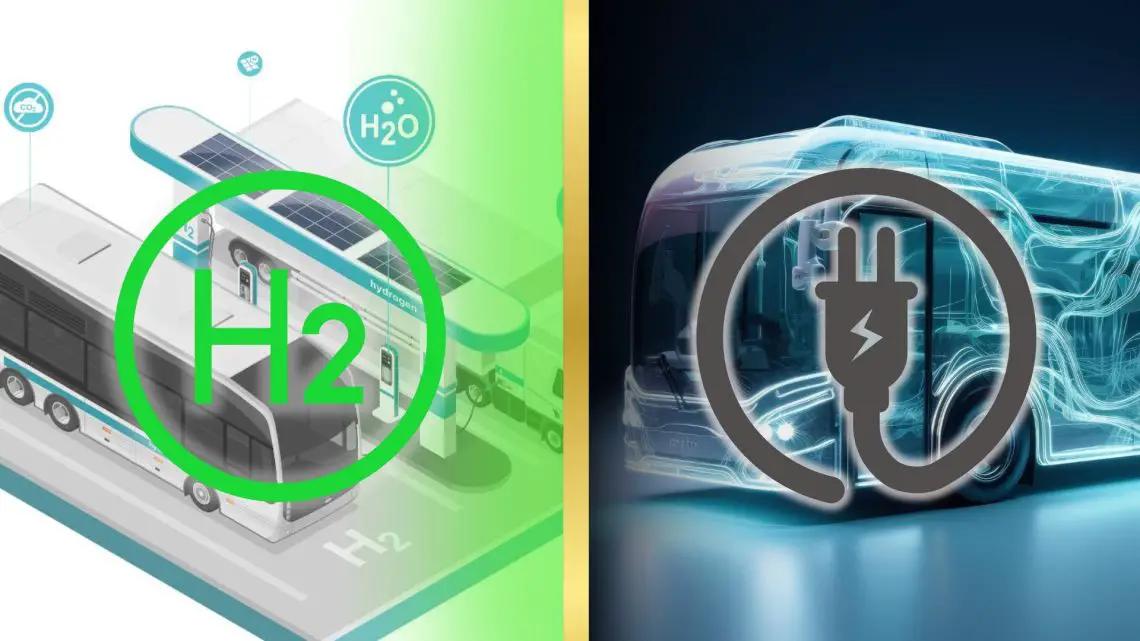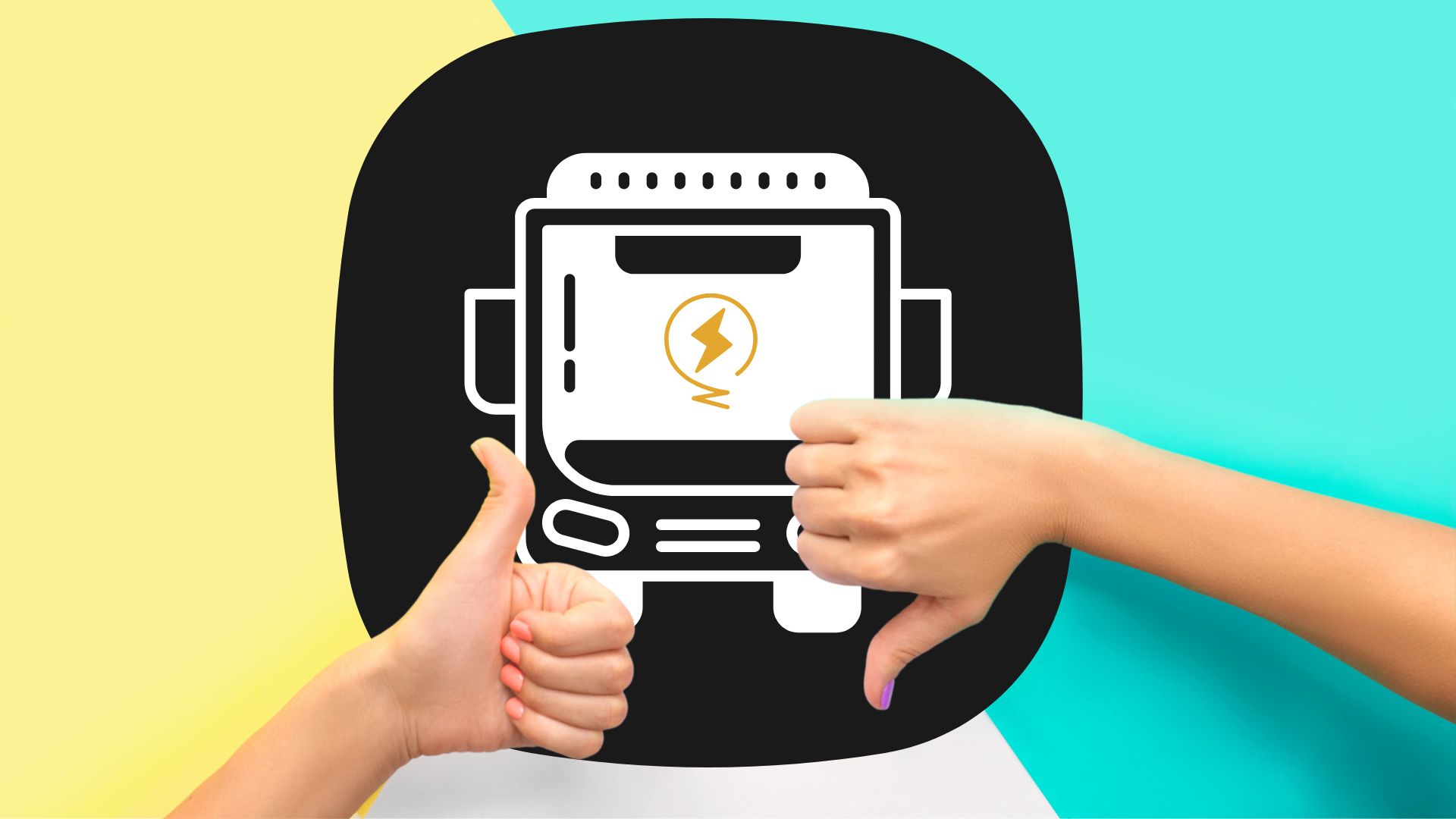
Hydrogen Buses vs. Electric Buses: Which Technology Will Drive Us Toward a Sustainable Future?
November 13, 2024With the push for sustainable transportation, battery electric and hydrogen buses are becoming central to discussions on public transit innovation. Cities across the globe, from Europe to Asia, are exploring how these zero-emission vehicles can replace traditional diesel buses and reduce greenhouse gas emissions. Both technologies promise cleaner air and quieter streets, but they operate fundamentally differently and offer unique benefits. In this article, we’ll conduct a direct comparison of these two types, exploring their strengths and weaknesses to understand which technology might lead the way in the future of public transportation.
How Do Hydrogen and Electric Buses Work?
Hydrogen fuel cell buses generate electricity through a process that combines hydrogen and oxygen within a fuel cell. During this reaction, hydrogen molecules split into protons and electrons, producing an electric current that powers the bus. This process results in zero harmful emissions, with only water vapor as a byproduct, making it an ideal zero-emission bus fleet option. Some of the generated energy is stored in onboard batteries, providing additional energy storage that powers the electric motor. The hydrogen used is stored in compressed tanks, either on the roof or the back of the bus.
Battery electric buses, on the other hand, operate solely on electricity stored in large batteries, which are charged from an external power source. These battery-electric vehicles have different charging methods: some use plug-in systems, while others rely on pantograph technology to charge at route terminals. For instance, on certain UK routes, buses use pantographs to recharge at each end, a solution that enhances energy efficiency by reducing downtime. The battery then powers the electric motor directly, making it a simpler design without the need for fuel cells.
Advantages and Disadvantages of Battery Electric Buses
Battery electric buses have a relatively straightforward design, without the need for expensive catalysts like platinum (used in hydrogen fuel cells). Battery electric technology also benefits from existing infrastructure, as many cities already have charging stations, which reduces integration costs for transport operators.
However, there are some challenges with battery electric ones. The batteries can take several hours to recharge, leading to increased downtime, and cold weather can impact battery performance, reducing range in winter months. Additionally, batteries are heavier, which can affect the overall efficiency and increase operating costs over time compared to hydrogen fuel cell vehicles.
Advantages and Disadvantages of Hydrogen Fuel Cell Buses
Hydrogen fuel cell technology is known for its quick refueling times, which are comparable to fossil fuels like diesel, making it highly suitable for continuous-use routes that require minimal downtime. The fuel cells used in these vehicles are more energy-dense than batteries, allowing hydrogen buses to cover longer distances on a single refuel. This feature is particularly beneficial for double-decker buses and other high-capacity models.
Another advantage is that hydrogen fuel cell buses perform well in colder climates, where batteries tend to lose efficiency. However, hydrogen buses require specialized infrastructure for hydrogen production and storage, which can increase initial costs. But as hydrogen technology advances and green hydrogen becomes more widely available, these costs are expected to decrease.
Shared Benefits: Environmental Impact and Noise Reduction
Both battery electric and hydrogen fuel cell buses contribute significantly to reducing carbon dioxide and other harmful emissions in urban areas, making them essential to achieving net zero emissions goals. Their zero emissions operation not only benefits air quality but also reduces noise pollution. Additionally, both types of buses feature regenerative braking, which captures and stores energy, boosting energy efficiency and overall efficiency for the vehicle.
Why Hydrogen Buses Could Be the Future of Public Transit
For high-demand routes, hydrogen fuel cell buses may be the preferred choice due to their ability to cover the same distance with quick refueling and minimal downtime. While battery electric buses work well in cities with extensive charging networks, hydrogen vehicles are a promising option for transit systems requiring longer ranges and higher capacity.
Early adopters and European cities are already testing hydrogen and electric options side-by-side. The European Commission has also shown interest in developing hydrogen fuel cell infrastructure to support these zero-emission buses, which could help lower total costs and make this technology more accessible.
Conclusion
In the hydrogen vs electric buses debate, there isn’t a one-size-fits-all answer. Battery electric and hydrogen fuel cell technology each have unique advantages, and their relevance depends on the specific demands of each city’s public transit system. Hydrogen buses may emerge as the ideal solution for routes with high passenger volumes and longer distances, while battery electric buses will continue to thrive in urban areas with established renewable energy charging networks. As both technologies continue to develop, the global shift to zero-emission public transit is set to play a crucial role in reducing fossil fuel reliance and building a cleaner, quieter future for our cities.



 With over 15 years of reporting hydrogen news, we are your premier source for the latest updates and insights in hydrogen and renewable energy.
With over 15 years of reporting hydrogen news, we are your premier source for the latest updates and insights in hydrogen and renewable energy.